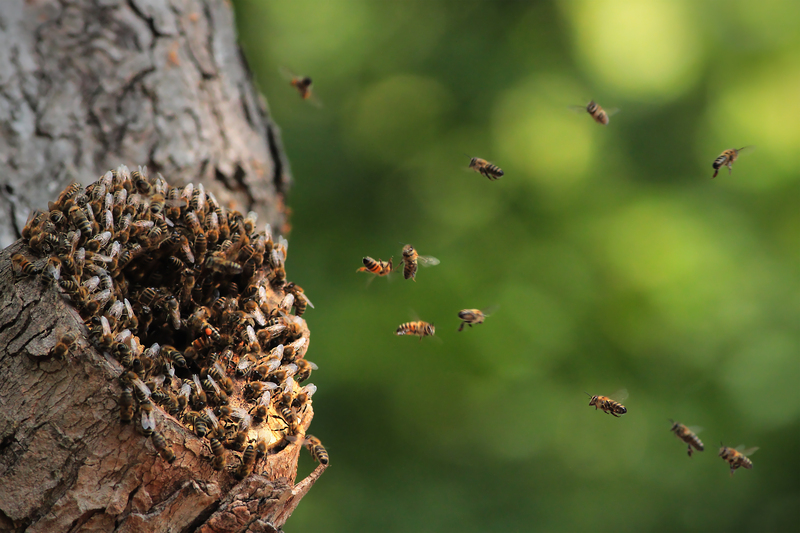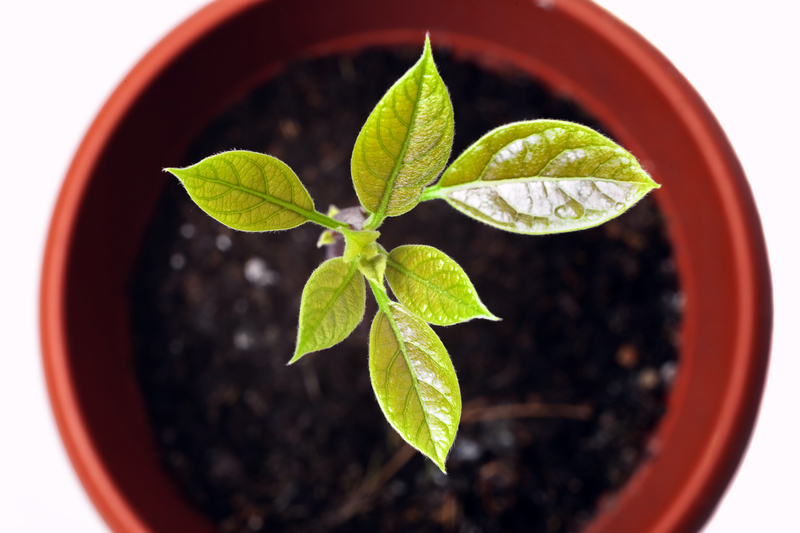Container Gardening: A New Way to Grow
Posted on 16/08/2025
Container Gardening: A New Way to Grow
Container gardening has transformed the possibility of growing lush gardens for people everywhere--no yard required! Whether perched on a balcony, flourished on a sunny windowsill, or cascading from a rooftop, these mini gardens offer a versatile and accessible approach to both novice and seasoned growers. In this comprehensive and SEO-optimized article, we'll explore the art, science, and practical techniques behind container gardening--making "a new way to grow" available to all.
What is Container Gardening?
Container gardening refers to growing plants exclusively in containers--pots, tubs, barrels, boxes, or any vessel that can hold soil and a plant. Unlike traditional in-ground gardening, this method offers flexibility, mobility, and the potential for creativity in limited spaces.
Why choose container gardening? The answer lies in its versatility, convenience, and accessibility for urban environments, renters, or anyone with limited mobility or space.

Benefits of Container Gardening
- Space-saving solutions: Perfect for small balconies, patios, porches, or even indoor corners.
- Mobility: Containers can be easily moved to optimize sunlight, shelter from storms, or redecorate your space.
- Pest and Disease Control: Growing plants off the ground often reduces exposure to soil-borne diseases and pests.
- Accessibility: Raised planters reduce strain, making gardening easier for kids, seniors, or those with mobility challenges.
- Extended Growing Seasons: Containers can be brought indoors or provided with covers to protect against cold snaps.
- Diverse Options: Experiment with exotic plants, culinary herbs, or vibrant flowers without committing valuable garden space.
Types of Containers for Gardening
Choosing the right container is an essential part of container gardening. Below are common container types, each with pros and cons:
1. Terra Cotta and Clay Pots
- Breathable: Helps prevent overwatering and root rot.
- Weighty: Ideal for stability in windy areas.
- Drawback: Can dry out quickly and may crack in freezing temperatures.
2. Plastic Pots
- Lightweight and affordable
- Great for moving and grouping together.
- Drawback: May heat up and dry soil quickly in full sun.
3. Wooden Planters
- Natural look that blends with outdoor settings.
- Insulates roots from heat and cold.
- Drawback: Requires periodic treatment to prevent rot.
4. Metal Containers
- Modern, industrial aesthetic
- Durable and long-lasting.
- Drawback: Can overheat in direct sun and damage roots.
5. Recycled Materials and DIY Containers
- Upcycle items like old buckets, tins, baskets, or even boots for a personalized touch.
- Eco-friendly and creative.
- Tip: Ensure drainage and safety for edible plant use.
Choosing the Right Soil for Container Gardening
Unlike traditional gardens, successful container gardening hinges on quality soil. Garden soil from your yard is usually too dense and can harbor pests or diseases. Instead, opt for a high-quality potting mix which is:
- Light and fluffy, allowing roots to breathe.
- Holds water while draining excess moisture.
- Free of weed seeds and pathogens.
Mix in organic compost or slow-release fertilizer pellets to nourish your plants throughout the growing season.
What Can You Grow in Containers?
One of the joys of container gardening is the astonishing array of plants you can cultivate. Some popular choices include:
Vegetables:
- Tomatoes, peppers, lettuce, spinach, radishes, carrots, beans, and peas all thrive in pots.
- Select compact or dwarf varieties for best results.
Herbs:
- Basil, parsley, thyme, mint, chives, oregano, rosemary, and cilantro add flavor and fragrance on a sunny windowsill.
- Tip: Some herbs (like mint) are best grown in pots to check their vigorous spreading.
Flowers:
- Petunias, geraniums, marigolds, begonias, pansies, and impatiens provide color and variety to any space.
- Mix trailing plants like sweet potato vine or ivy for cascading effects.
Fruits:
- Strawberries, blueberries, dwarf citrus, and figs can bear fruit in larger containers.
- Consider: Pollination needs and winter protection for perennial fruits.
Design Tips for Beautiful Container Gardens
Creating striking arrangements in container gardening is both an art and a science. Follow these key guidelines for stunning displays:
- Thriller, Filler, Spiller: Combine a tall focal point ("thriller"), mid-sized mound plants ("fillers"), and trailing varieties ("spillers") for a balanced look.
- Color harmony: Coordinate colors for visual impact. Pair contrasting blooms or stick to a soothing single hue palette.
- Group by needs: Match plants by light and water requirements to ensure they thrive together.
- Vary container heights: Use stands, steps, or hanging pots for added depth and interest.
- Seasonal switch: Rotate in new plants as the seasons change for year-round appeal.
How to Start a Container Garden: Step-by-Step
Ready to begin your container gardening journey? Follow these simple steps:
- Choose your container: Ensure it has drainage holes and suits your space and aesthetic.
- Select the soil: Fill with a high-quality potting mix, amending with compost if needed.
- Plan your plants: Select varieties compatible in size, sunlight, and watering needs.
- Plant properly: Take care not to pack soil too tightly and allow room for roots to grow.
- Water in: Thoroughly water after planting and establish a regular watering schedule.
- Feed regularly: Fertilize as recommended for your chosen plants. Many container plants require more frequent feeding than those in beds.
Best Practices for Successful Container Gardening
- Drainage is vital: Never allow roots to sit in water. Place broken pottery, gravel, or mesh over holes if needed.
- Monitor moisture levels: Potted plants dry faster than in ground--check soil a finger's depth before watering.
- Rotate for sunlight: Move containers as sun patterns change through the season.
- Prune and deadhead: Maintain plant vigor and encourage more blooms or fruit.
- Watch for pests: Inspect leaves regularly and address issues early for best results.
Vertical Container Gardening: Maximizing Space
A variation on the container gardening theme is vertical gardening. By growing upwards, you can dramatically increase your planting area. Ideal for apartments and urban patios, vertical gardens can be created with:
- Stacked planters, tiered shelves, or wall-mounted containers
- Repurposed pallets or hanging pockets for herbs and lettuce
- Climbing plants such as pole beans, cucumbers, or flowering vines trained onto trellises
Embrace vertical gardening to make the most of "growing in containers" when square footage is precious.
Common Container Gardening Mistakes and How to Avoid Them
As with any gardening endeavor, certain pitfalls can hinder your success. Here's how to steer clear:
- Overcrowding: Give plants enough space to grow. Over-planted containers compete for nutrients.
- Insufficient drainage: Ensure containers have holes and use the right soil.
- Underestimating water needs: Potted plants dry out quickly--establish a regular watering schedule.
- Improper sunlight: Place sun-loving plants in direct light and shade-loving plants accordingly.
- Ignoring fertilization: Nutrient depletion is fast in pots--supplement regularly.
Seasonal Container Gardening: Year-Round Interest
Container gardening isn't just for spring and summer! Keep your planters attractive throughout the year:
- Spring: Start with bulbs and cool-season annuals.
- Summer: Add heat-loving flowers and vegetables.
- Autumn: Swap in ornamental grasses, mums, and kale.
- Winter: Evergreens, winter heathers, and festive arrangements of twigs and berries provide structure and interest.
Eco-Friendly Container Gardening Practices
Sustainable, eco-conscious techniques make your container garden green in every sense of the word:
- Reuse and upcycle containers whenever possible
- Compost kitchen scraps to enrich your potting mix
- Collect rainwater for irrigation
- Avoid chemical pesticides and opt for organic solutions
- Choose native and drought-tolerant plants for lower water usage
Container Gardening for Special Purposes
Therapeutic Gardening:
Container gardening can provide mental and physical benefits, serving as a stress reliever and promoting mindfulness. Indoor containers add calm and nature to offices and homes.
Edible Gardens:
Grow salad greens, microgreens, and culinary herbs right by your kitchen. Container vegetable gardening supports a healthy lifestyle and reduces your carbon food-print.
Pollinator Gardens:
Select containers of native bee-friendly flowers to support local biodiversity, even in the heart of the city.

Frequently Asked Questions (FAQ) about Container Gardening
- How often should I water my container plants?
Typically every 1-3 days, depending on plant type, weather, and container size. Always check soil moisture before watering. - What size pot is best?
Bigger is generally better for root development and reducing drying out, but match pot size to plant size and space available. - Can I grow trees in containers?
Yes! Choose dwarf or patio varieties and use very large containers. Citrus, fig, and Japanese maple are popular options. - Should I mulch my pots?
A layer of bark, pebbles, or coir helps retain moisture and suppress weeds.
Conclusion: Embrace the Joys of Container Gardening
Container gardening is more than a trend--it's a lifestyle, a solution, and a source of endless creativity. From urban rooftops to suburban patios--and everywhere in between--this new way to grow empowers everyone to cultivate beauty, nourishment, and tranquility in the spaces they have.
Whether you're sprouting your first basil plant or designing an elaborate patio oasis, the possibilities of gardening in containers are as expansive as your imagination. Take the first step today, and unlock the boundless rewards of container gardening in your own home!



